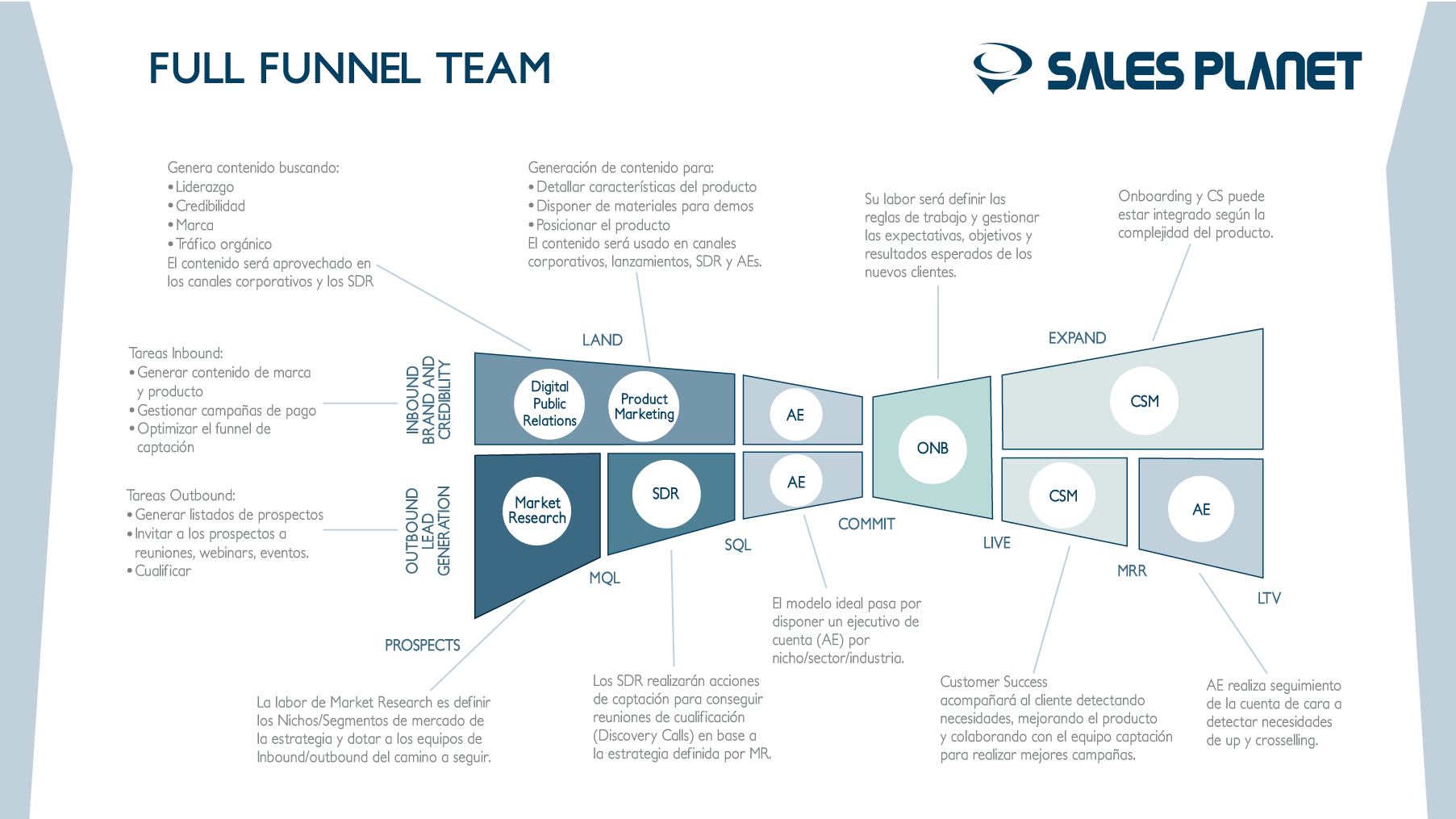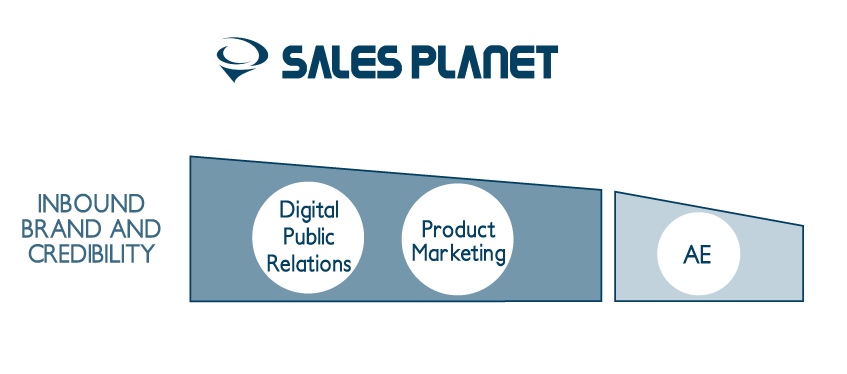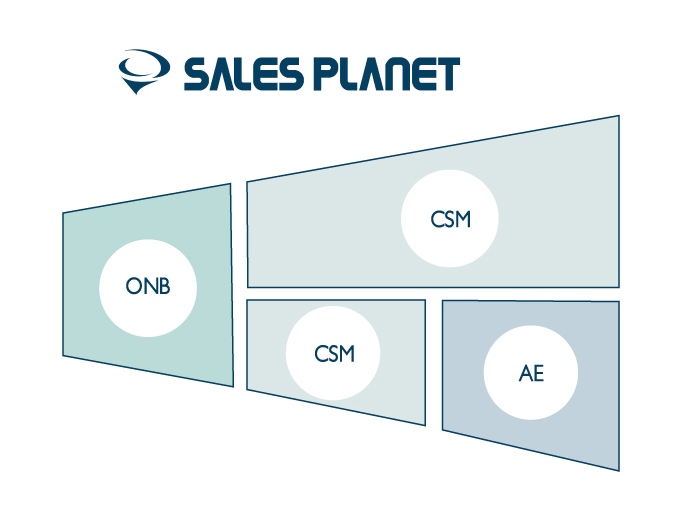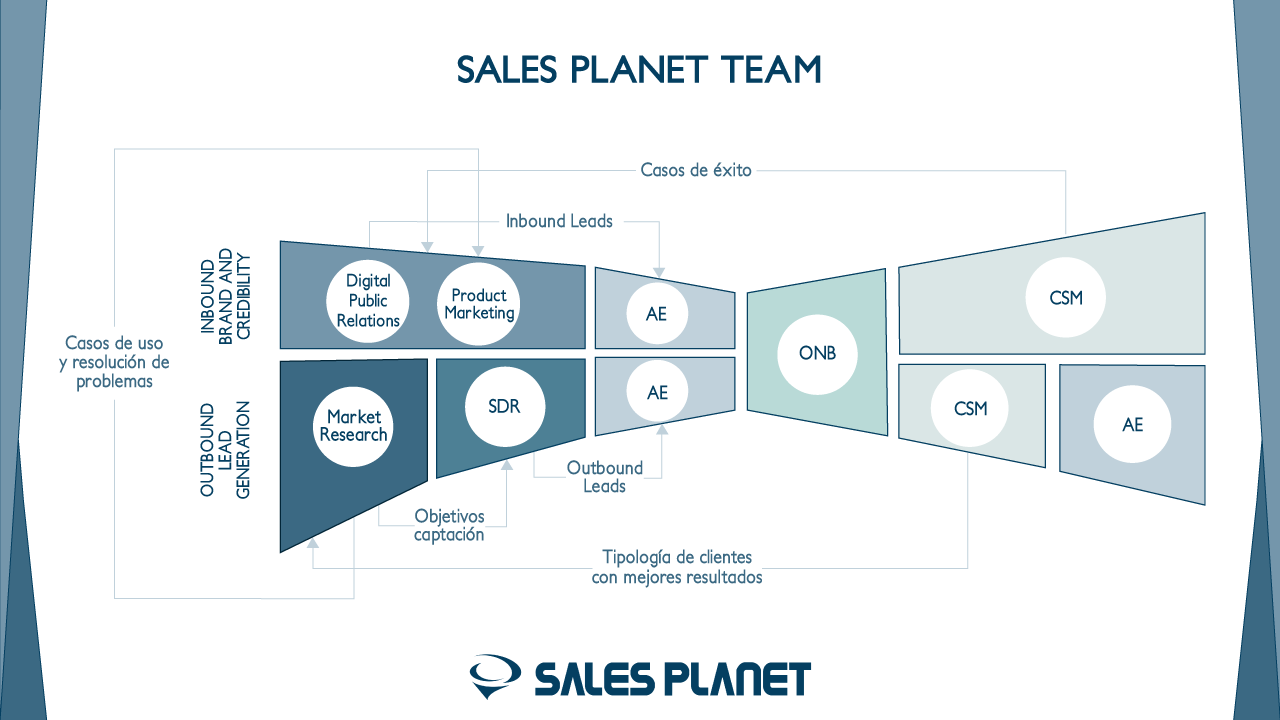
Aligning the structure of the team with the tasks to be carried out is basic for the sales machine to work.
In this way, once the tasks are detailed, they will be independent of the people, which will give you the ability to analyze the model, detect less efficient areas, build faster teams and, most importantly, replicate and scale the sales department.
Below is the distribution of tasks/teams that we will follow throughout the program.

1) Inbound: These are medium/long-term strategies, which seek to increase credibility, brand awareness and publicize the effectiveness of the product. They have an educational purpose. It is made up of:
You will see it later, in the "Content Factory" mission, but our recommendation is to publish 1 brand content vs 5 product content, so you should create more product content (much more) in your Inbound strategy.

2) Outbound: Perform instant actions that seek to get "fast" meetings (in a matter of days or weeks depending on the Niche). They build a database, create message sequences and seek to chat with prospects to generate meetings. The advantage is that they are practically free. Email account, linkedin... and little else...

Both actions seek to get new leads, new meetings, new clients. They are not exclusive, nor are they opposed. They complement each other A LOT so the more coordinated the two lines are, the greater their success.
It doesn't matter what you call these departments (marketing, sales, recruitment, lead generation, commercial... the name is the least important), but at the level of tasks it has to be VERY CLEAR:
Onboarding (ONB): What to do when a client tells you YES.

Customer Success Management (CSM): What service to give to the client, detect new opportunities, feed the PM and SDR team with relevant information to improve recruitment, inform the AEs team,...
As in the previous point, coordination in these tasks is essential to build a product each time more useful for your clients, generate better content, improve your value proposition...
We seek to generate a machine that is coordinated, where communication flows and is reused between departments.
Like this:

Example: Customer Success, the results of the best clients must be communicated with Market Research (MR) but also with Digital Public Relations (DPR) so that they can, A) MR can search for more objective accounts of those Niches and B) DPR can elaborate cases of success that bring credibility to sellers.
For now, think about how you can adapt this structure in your company. It does not have to be one person per department, since it is very common for a profile to have several assignments (for example, marketing in charge of DPR and PM in small companies), but if you think about the functions of each one.
Write an initial version of the tasks and assign them to those responsible for your team.